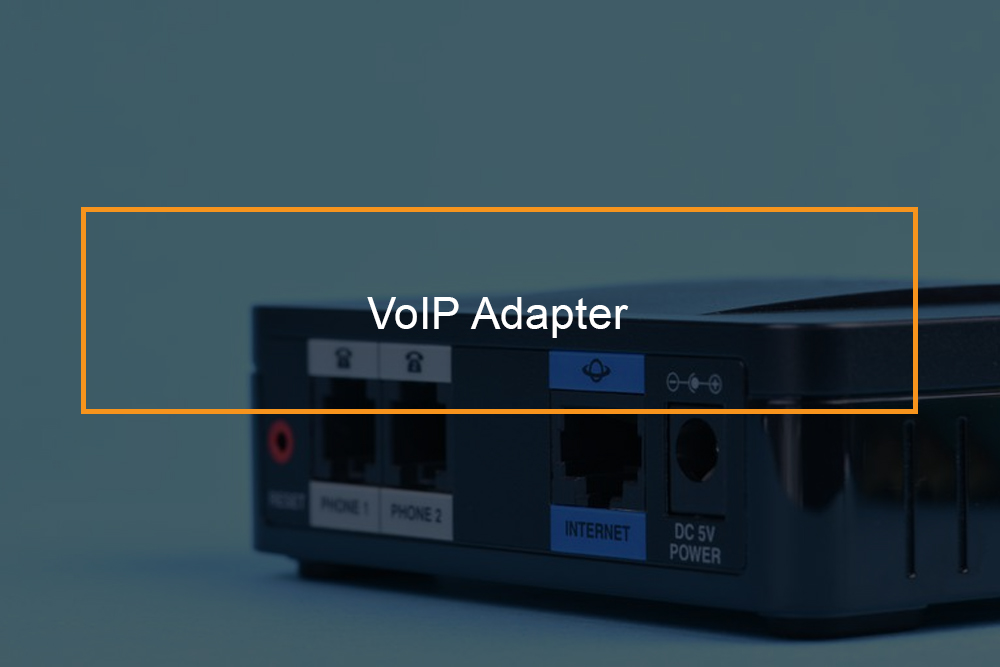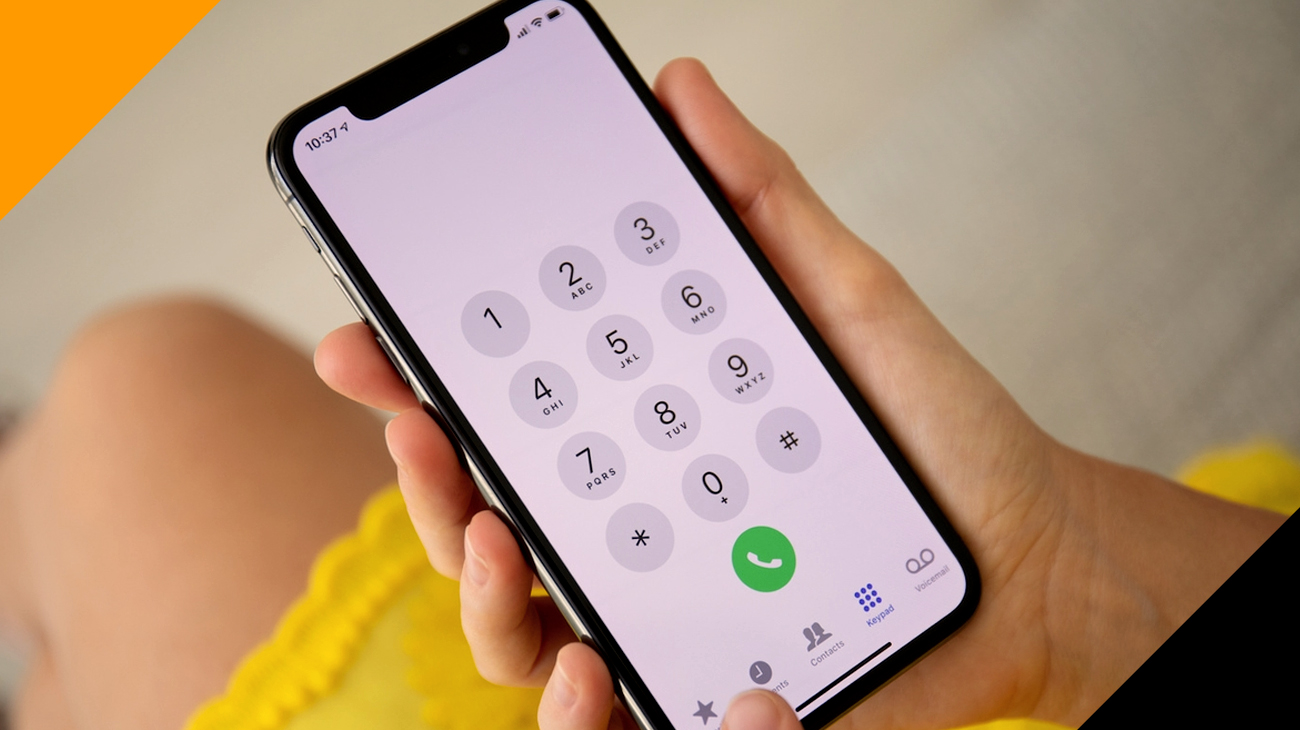What is VoIP adapter (ATAs) and how does it work?
 A VoIP adapter is a device that changes analog voice signals into digital IP packets for transmission over an IP network. A voice over internet protocol (VoIP) adapter also changes digital IP packets in analog voice streams.
A VoIP adapter is a device that changes analog voice signals into digital IP packets for transmission over an IP network. A voice over internet protocol (VoIP) adapter also changes digital IP packets in analog voice streams.
Regular VoIP adapters connect to analog phones through an FXS port. The VoIP adapter then links to your Local Area Network (LAN) with an ethernet cable through RJ45 port. Some VoIP adapters also feature an FXO port so you can connect to the Public Switched Telephone Network (PSTN).
Even though VoIP adapters are simple devices, they are vital for residential Voice over IP service. That is why it is significant to understand VoIP adapters before you buy one. Let’s learn more about adapters here.
What ports does VoIP adapter use?
FXS and FXO ports
FXO and FXS ports are significant to understand and not to confuse them. An FXS port is an interface that links station devices like your phone or Private Branch Exchange(PBX) to a VoIP adapter. An FXO is an interface that connects your POTS line to a Voice over IP adapter.
The number of telephones, PBX systems, or Plain Old Telephone Service (POTS) lines you are looking to link to a VoIP adapter determines how many of every port you will require.
How does VoIP adapter work?
VoIP adapter system
VoIP adapter works to change human voice into data packets and vice versa. Implementing a VoIP adapter eliminates the need for buying a new device compatible with VoIP phone systems. Typically VoIP adapter functions include: providing caller ID, identifying touchstones, the dial tone, and other signaling functions needed for a Voice over IP call.
A voice over IP adapter operates as a bridge between an IP network and a traditional station, desktop telephone, and or the PSTN. Depending on where the voice traffic gets its roots from a VoIP adapter will change voice traffic into the proper kind form of receipt by the destination network or device.
In case the voice traffic is coming from an analog telephone or the PSTN, a VoIP adapter will change the analog voice signal into digital packets. The digital signal is then compressed deployed codec and broken into a series of packets that are transmitted across the IP network through a signaling protocol.
In case the voice traffic is coming from an IP network, Voice over IP adapter will decompress the digital packets into a digital signal that is then changed into an analog signal for receipt by the station device or sent across PSTN.
Standard features of VoIP adapter
Below are some of VoIP standard features:
- Automatic provisioning through TFTP/HTTP
- Web-based management administration
- Echo cancellation, VAD, Jitter Buffer and CNG
- T.38 compliant (for faxing)
- Support for G.723.1, G.711, G.726, and G.729A voice codecs.
The features discussed above are just standards found in most VoIP adapters. Every VoIP adapter will have its differences in features. For more details about a particular Voice over IP adapter, you can check its full product description on its manual.
VoIP adapter codecs and protocols
Protocols and codecs are seldom of interest to the average client since their VoIP service provider will offer one for them or even give them a selection of those who know how to work for the service.
If you are buying a VoIP adapter for business purposes, you need to know what protocol is powered by their provider and the audio codecs. These recognize the quality of the calls and the amount of bandwidth that is required. So that your adapter can operate well, it must use a protocol and codec that is compatible with your Voice over IP phone system and or VoIP service. The codec and protocol you use can also increase or reduce the quality of your voice calls.
A VoIP protocol evaluates how your voice packet is transmitted across a network. A VoIP adapter will support a single protocol. Below are some of the most used protocols by service providers.
- Session Initiation Protocol (SIP)- SIP is a standards-based protocol that is used and powered by the vast majority or Voice over IP phone systems and services.
- MGCP protocol- MGCP is an older protocol that is not widely used or supported.
- SCCP- It is also known as the Cisco Skinny Client Control Protocol. It is a proprietary protocol by Cisco’s Callmanager and IP telephones.
- H.323- It is the same as MGCP, and it is an older VoIP protocol that you may come across but is not widely used or supported.
Voice codecs
Voice codecs are responsible for the compression of your voice stream within the digital packet. It also recognizes the sound quality and data needed to send the packet. A VoIP adapter supports many voice codecs. The most common voice codecs are;
- G.729 – 8 Kbps
- G.728 – 16 Kbps
- G.726 – 16/24/32/40 Kbps
- G.722 – 48/56/64 Kbps
- G.71 1 – 64 Kbps
- iLBC – 15 Kbps
- GSM – 13 Kbps
In case the adapter is included in the purchase price by the VoIP service provider, then the device is preconfigured with the right settings. In case they were bought separately, then web configuration can be accessed via a computer.
Most enterprise-ready adapters come with automatic provisioning, so most of these devices can be implemented at once without individual configuration.
Not unless you are the person who is responsible for the configuration, installation, and maintenance of Voice over IP adapters for a VoIP service provider, you do not have to worry about codecs and protocols. Just make sure the VoIP adapter supports the same protocols and codecs that your VoIP phone system or service support.
Types of VoIP adapter
Three Types of VoIP Adapter
- FXS/FXO- This VoIP adapter enables you to connect a single telephone and single POTS line. These amalgamation adapters are typically deployed to offer fail-over or life-line capabilities.
- Dual FXS- This adapter enables you to link up two telephones. Dual FXS VoIP adapters come with either one or two ethernet ports.
- Single FXS- A single FXS VoIP adapter enables you to link one telephone. Single FXS VoIP adapters come with either one or two ethernet ports.
VoIP adapters are commonly used by enterprises that need to retain landline access as a failsafe or implemented in emergency cases. FXO adapters are particularly useful in case the VoIP vendor does not support digital faxing, but the enterprise requires occasional fax sent.
Companies that use more than one line will need a VoIP gateway. A VoIP gateway function like adapters but are built to scale and are usually equipped with forty-eight ports.
Tips on how to implement your VoIP adapters in your business
Tips for using a VoIP adapter with your business wireless network
- Utilize a wireless bridge to connect to WiFi: The first thing to do is connect the Voice over IP adapter to your wireless.
- Use your VoIP adapter with your phone: The main reason for getting a VoIP is to save cost. Connecting your internet phone is a cheap way of placing calls. This will provide you access to unlimited internet calling.
- Avoid mixing VoIP and data: All the Voice over IP apps are sensitive to any disruptions or delays. Disruption is doing data transfer on the same wireless network, for example. This can cause the degradation of voice quality. Ensure you use the quality of service features. Use it to make sure that Voice over Internet Protocol gets priority.
- Utilize a secure wireless network: One of the greatest issues of using a VoIP adapter with your business network is secure. Transmissions that go over airwaves are more susceptible to interception than transmission via cables. Therefore. The wireless network connected to your Voice over Internet Protocol adapter must be safe.









